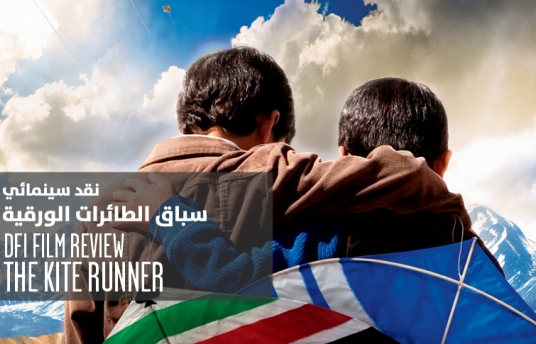DFI Film Review: The Kite Runner (2007)
Sep 18, 2011

Written by Reem Saleh, New Media, DFI
Film: The Kite Runner
Year: 2007
Director: Mark Foster
Stars Stars: Khalid Abdalla, Ahmad Khan Mahmoodzada and Atossa Leoni
Genre: Drama, Romance
Set in Afghanistan, created by ‘Finding Neverland’ director Marc Foster, and adapted from Khaled Hossein’s bestselling novel of the same name, ‘The kite Runner’ tells the story of two childhood friends in Afghanistan, before the Russian invasion of 1979. Amir (Khalid Abdalla and Zekeria Ebrahimi), son of a well-off anti-Russian intellectual, and Hassan (Ahmad Khan Mahmoodzada) the son of their servant, grow up together and become inseparable friends. They enjoy flying kites together, and Hassan loves it when Amir reads to him, something he can’t do himself. When Hassan is faced with misfortune, however, Amir turns his back on his lifelong friend. The Russian invasion forces Amir to flee Afghanistan with his father, and to start a new life, filled with guilt, and remorse. Many years later, Amir gets the chance to reconcile with his past once and for all.
Kites fly in the azure skies of hopeful Afghanistan, turning and twirling in visually striking scenes filled with the joys of innocence. Within this beautiful atmosphere, two families of different social classes are bond by respect and loyalty.
Amir’s father, Baba, criticizes his son. According to him, Amir doesn’t stand up for himself.
Hassan on the other hand is very mature for his age. He shows signs of wisdom and innate talents. He would never hurt anyone, and stands up for himself, and his friends.
“Trust me,” he tells Amir, “ Have I ever let you down?”
After winning the kite competition, a very popular sport in their city, Hassan leaves Amir to enjoy the glory of being cheered by the crowd and goes to collect the winner kite. On his way, a group of bullies interrupt him, wanting to take his kite. Hassan bravely refuses because it’s Amir’s kite…it is the property of his best friend. Not taking no for an answer, the boys brutally abuse him, and assault him. Amir witnesses the scene from a distance, and runs away in fear instead of interfering to save his loyal friend. The guilt Amir feels after these events becomes the beginning of the end of their friendship. What follows will change their lives forever. Amir starts avoiding the sight of Hassan. Even this sight of him becomes too painful. Amir tries to convince his father to change servants, something Baba gets furious about. But the invasion of Afghanistan by the Russians was reason enough for the rich family to flee the country, and Hassan and his father are left behind.
Years later, after Amir’s graduation from college in the United States, the memory of Hassan remains strong. A phone call from home gives him a rare chance to make up for turning his back to Hassan, even though it means risking his safety to return to a country led by the Taliban.
The film creates three different portraits of Afghanistan. First is the pre-Russian era of colorful kites, of freedom, and of people finding pleasure in simple and beautiful things. Here, Afghanistan seems like a healthy and happy place to live, filled with discussions of literature and politics at the tables of the country’s intellectuals. This Afghanistan is fresh and engaging, with beautiful scenes of pastries and spices colorfully piercing the screen straight to our senses. Here, there is simply joy, culture, and art.
From this nostalgic description, the color palette changes to shades of grey. The Russians invade Afghanistan. The graying of the mood is coupled with a decline of friendship and hope. Things are going to a bad direction, and nothing of the earlier light, and brightness remains.
In the US, the film exposes the struggles of both Baba and Amir, now emigrants. This life is not what they’re used to, but what they are forced to adapt to.
When Amir decides to return to Afghanistan, he is faced with another side of danger, and a third portrait of Afghanistan. Now ruled by Muslim fundamentalists, this is the Taliban’s Afghanistan with new rules, banning everything colorful and fun, including kites. The streets sound different. Death lingers around every corner. The people have lost their smiles.
The film paints an evolving picture of Afghanistan, that gives the kinds of insight news bulletins cannot capture. A nostalgia for the recent past reminds us of the recent history of this country, and of an Afghanistan many people have forgotten.
The children’s performance is intense, and natural, reminiscent of the great Iranian filmmakers Abbas Kiarostami and Jaafar Panahi, both masters of getting the best from young actors.
In a political context, the story hints at the dreams of a country that disappeared when the kites stopped flying, and when people began forced allegiances to the Taliban.
In the journey of this exceptional friendship, time seems to bring a rare chance for a proper closure.
As long as kites can fly, there will always be hope.
The Kite Runner - Trailer
إعلان فيلم سباق الطائرات الورقية